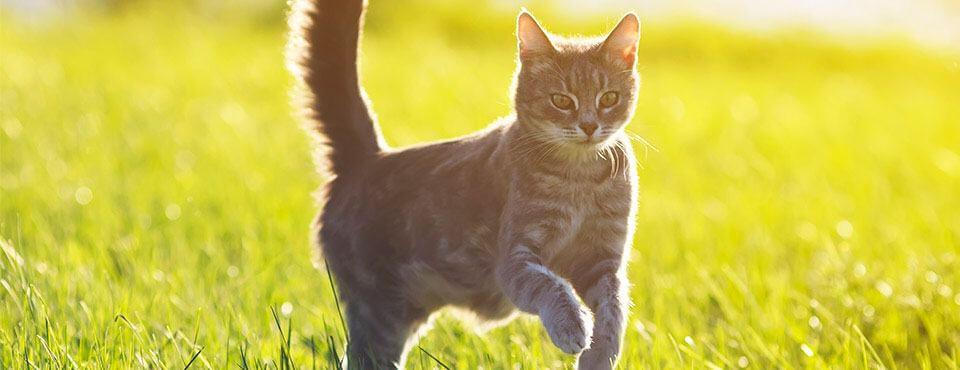The weather impacts dogs and cats’ behaviour in a way not that different to our own.
As a pet owner, you’re probably aware that dogs, cats, and other four-legged friends can be affected by changing temperatures, and that, as weather becomes more extreme, its effect on them is more pronounced.
An issue for pets and people
Changing weather is an issue for both animals and humans, as pet experts Muriel Marion and Jacques Guillot made clear when they commented:

“[SEASONAL CHANGE] IS A TOPIC THAT WORRIES VETS THEMSELVES, AND THEY ARE SHARING THAT CONCERN MORE AND MORE WITH PET OWNERS. IT’S A TOPIC THAT’S GAINING MOMENTUM.”
Everything that affects our behaviour indirectly affects our pets, too. If the summer heat is too hot to go out, our dogs may not get as much exercise. They could become bored and may gain weight.
In addition, spending less quality time with our pets may also trigger other behavioural issues, such as separation anxiety.
Storms and noise phobias
Does thunder make you jump? Imagine its effect on pets who have no idea what a thunderstorm is! And unfortunately, rising temperatures cause storms and thunder to become more frequent.
Most pets are naturally sensitive to noises and tend to become fearful during noisy events like storms and thunder.
If the noise fear is neglected, it could progress until it becomes a generalised noise phobia.
The more severely a pet reacts to the phobia-triggering sound, the longer it takes to recover, which adversely affects their overall health, welfare, and behaviour.
Some experts have commented that, in the past, thunderstorm-related phobias were mostly seen in adult dogs, whereas nowadays they are increasingly common among puppies and kittens.
Rising temperatures and heat stress
Hot weather is another big issue for dogs and impacts them in the following ways:
- Makes panting ineffective, increasing the risk of heatstroke
- Increases the possibility of painful traumatic burns on paws
- Reduces the opportunities for outdoor recreation and exercise
In addition to heat stress, flat-faced cats and dogs will also experience more problems simply breathing.
Heatstroke is a life-threatening condition for pets. Dogs are at risk during summer and heat waves, which are becoming more frequent.
When a dog cannot cool down, their body simply shuts down… Some common symptoms of heatstroke are:
- Excessive panting
- Excessive drooling
- Confusion and even passing out
- Vomiting and diarrhoea
Rising temperatures make heatstroke a greater risk. Here’s some advice to protect your pets from the heat:
- Always keep your four-legged friend well-hydrated
- Time your walks for the cooler hours during hot days
- Make sure you provide enough shade and shelter from the heat
- Take more frequent breaks during walks or exercise
- You probably already know this, but never leave a pet inside a parked car!

The hidden dangers of staying indoors
The logical reaction to more extreme weather is to spend more time indoors. For pets, this means less exercise and possible health issues such as obesity.
Less obviously, indoor life can mean less stimulation, which could lead to issues around sleeping, eating, and even motivation.
In some circumstances, indoor life can be more stressful for pets. In addition, the potential boredom of being indoors can lead to pets chewing furniture, their own bedding, and developing separation anxiety.
Stay informed to protect your pet
Changing weather patterns and rising temperatures are creating a surprising range of subtle and serious threats for our pets.
Which is why we have an in-depth guide on concerning changes to pet behaviour to give you the science-led facts from a range of experts.
Your vet plays a big role in your pet’s health. Enter your location and get a list of vets near you.
FIND A VET














 Go To United States
Go To United States Austria
Austria Belgium
Belgium Czech Republic
Czech Republic Denmark
Denmark Europe
Europe Finland
Finland France
France Germany
Germany Greece
Greece Hungary
Hungary Ireland
Ireland Israel
Israel Italy
Italy Netherlands
Netherlands Norway
Norway Poland
Poland Portugal
Portugal Romania
Romania Saudi Arabia
Saudi Arabia Slovakia
Slovakia Spain
Spain Sweden
Sweden Switzerland
Switzerland Turkey
Turkey United Kingdom
United Kingdom